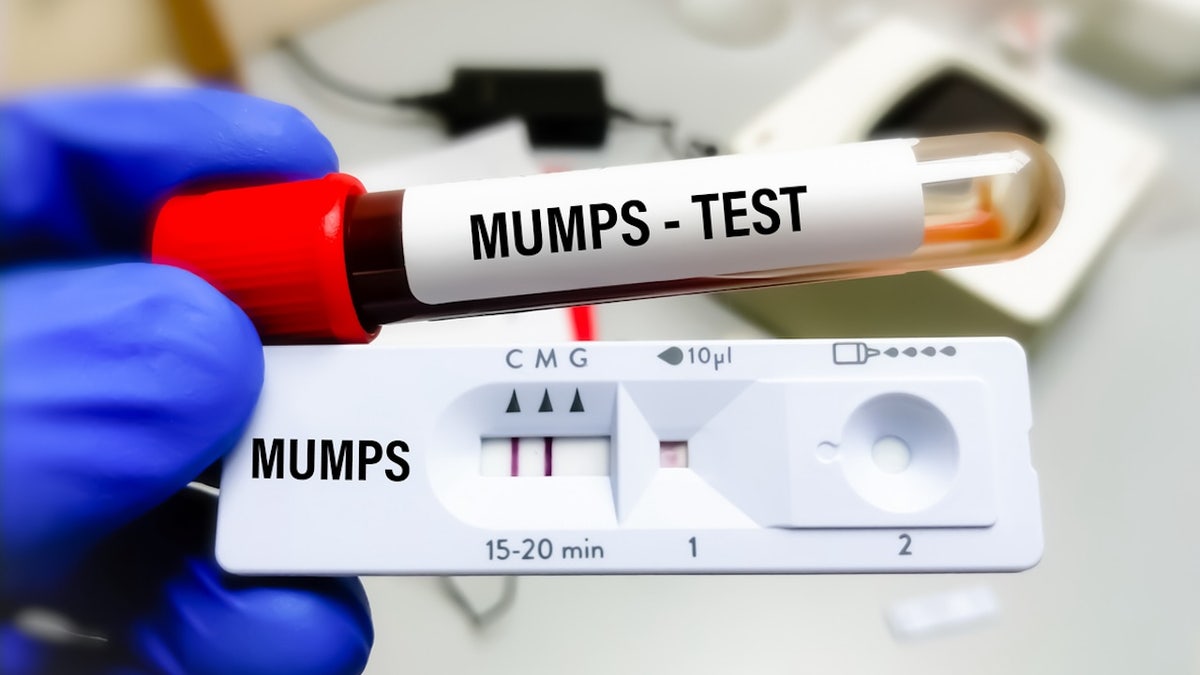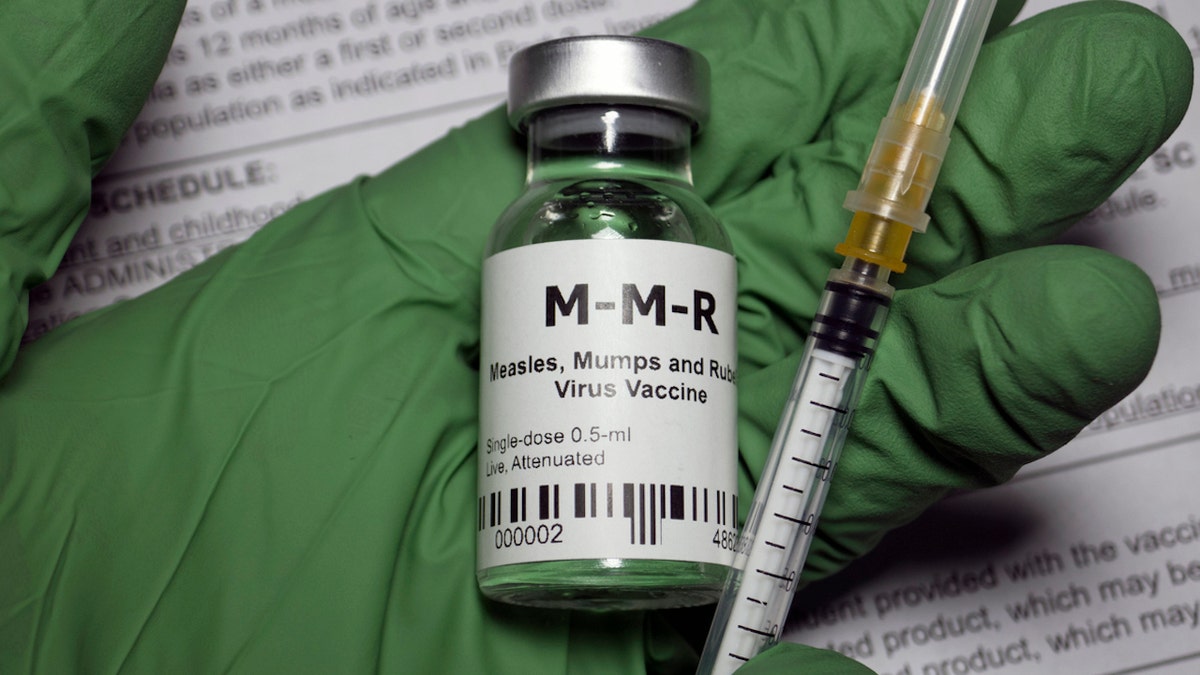The New Jersey Department of Health is investigating a suspected cluster of mumps cases in Hunterdon County among eight family members who traveled internationally, according to a recent press release.
No additional information was provided due to privacy concerns, the release indicated.
The U.S. Centers for Disease Control and Prevention (CDC) has reported at least 50 cases of mumps from over 20 states this year.
MEASLES VACCINATIONS GIVEN IN ’70S AND ’80S MAY HAVE WORN OFF BY NOW, DOCTOR WARNS
Health officials say that vaccination is the most effective protection.
“The best way to keep you and your loved ones safe is to get the MMR shot,” said Dr. Kaitlan Baston, the acting health commissioner, per the release.
“These viruses are incredibly contagious, so if you suspect you may have measles, mumps or rubella, it is important to call ahead before visiting any health care provider or facility so they can take special precautions,” she added.
What is mumps?
Mumps is an infectious disease caused by a virus.
It’s spread by direct contact with saliva, such as kissing or sharing water bottles with someone who has mumps.
It can also spread by respiratory droplets from the mouth, nose or throat from an infected person who is talking, coughing or sneezing, according to the CDC.
AMID MEASLES OUTBREAKS, FLORIDA DEPARTMENT OF HEALTH SPEAKS OUT AGAINST ‘FALSE INFORMATION’
Outbreaks often occur in settings where there is frequent close contact, such as on college campuses or in large gatherings.
“Mumps itself typically causes swelling of the glands in the head and neck that make saliva — most often the parotid glands, which are the largest salivary glands that sit just in front of the ears,” Dr. Mike Smith, chief of pediatric infectious diseases at Duke University School of Medicine in Durham, North Carolina, told Fox News Digital.
Symptoms of mumps
Someone who is infected with mumps can spread the infection several days before the parotid glands start to swell and up to five days after, the CDC stated.
Some people may not develop any symptoms; but for those who become symptomatic, they generally start to feel sick anywhere from 12 to 25 days after infection.

Typical symptoms include fever, headache, muscle aches, fatigue and loss of appetite.
Most people get better on their own within two weeks.
In rare cases, especially in adults, swelling may occur in other parts of the body.
The most common complication of mumps in males is inflammation and swelling of the testicles, or orchitis, which occurs in about a third of unvaccinated men, Smith said.
Why is mumps making a comeback?
Reported cases of the mumps fell by more than 99% after the MMR vaccine was introduced in the U.S., the CDC noted.
Outbreaks and cases have been increasing since 2006, however — with most diagnoses occurring in young adults and previously vaccinated individuals, the agency adds.
MEASLES OUTBREAKS IN US, UK HAVE HEALTH AGENCIES ON HIGH ALERT: ‘BE VIGILANT’
“There is no individual vaccine against mumps, but it is part of the MMR vaccine that prevents measles, mumps and rubella,” Smith said.
It is recommended that children get two doses, starting with the first dose at 12 to 15 months old and a second dose between 4 and 6 years of age, according to the CDC’s website.
Adults who are not immune are advised to get at least one dose of the MMR vaccine.

“Mumps immunization rates unfortunately are not where they should be,” Dr. Aaron Glatt, chief of infectious diseases at Mount Sinai South Nassau Hospital on Long Island, New York, told Fox News Digital.
Only about 90% of children are fully vaccinated for mumps by 24 months of age, according to the CDC.
If people receive the standard recommendation of two mumps vaccinations as a child, there still is a chance that immunity will wane and they will get mumps if exposed later in life, according to Glatt.
“As such, we actually recommend that a third dose be given to people in an outbreak setting,” he said.
Differences between measles and mumps
Measles and mumps are caused by different viruses that belong to the same family of viruses called Paramyxoviridae, which are known to spread disease by respiratory droplets, according to the National Institutes of Health.
“Worldwide, both measles and mumps are very significant problems, with over 100,000 deaths due to measles in the previous year,” Glatt said.

The MMR vaccine protects against both viral infections, but measles is more contagious than mumps, with the highest mortality rate among the three infections that it protects against, Smith added.
“Measles is a far more serious illness than mumps, and is also making a resurgence in the U.S. after we thought we had eradicated it in 2002,” Glatt noted.
Common complications of measles include diarrhea and ear infections, but severe cases can include brain swelling (encephalitis) and pneumonia.
MEASLES VIRUS CONTINUES TO SPREAD AS WHO SAYS MORE THAN HALF THE WORLD HAS HIGH RISK OF CONTRACTING THE VIRUS
The CDC estimates that up to 90% of people who are exposed to someone with measles will get infected if they are not already immune.
Among the current measles outbreaks in the U.S., almost all cases have involved unvaccinated individuals, according to Smith.
Many young people who get infected with mumps, however, have received vaccinations.

A 2021 CDC report that reviewed cases of mumps from 2007 to 2019 in children and adolescents found that approximately 94% of people who contracted mumps were previously vaccinated.
The two infections also have different symptoms.
CLICK HERE TO SIGN UP FOR OUR HEALTH NEWSLETTER
People infected with measles usually develop their first symptoms within seven to 14 days after getting exposed, while people who get mumps usually experience illness around two weeks after infection.
The most classic sign of measles is cold symptoms followed by a red rash that starts on the face and moves downward.
With mumps, a telltale sign is puffiness of one or both cheeks, which occurs after non-specific symptoms.
Most people with mumps and measles get better within one to two weeks.
For more Health articles, visit www.foxnews.com/health.
Read the full article here